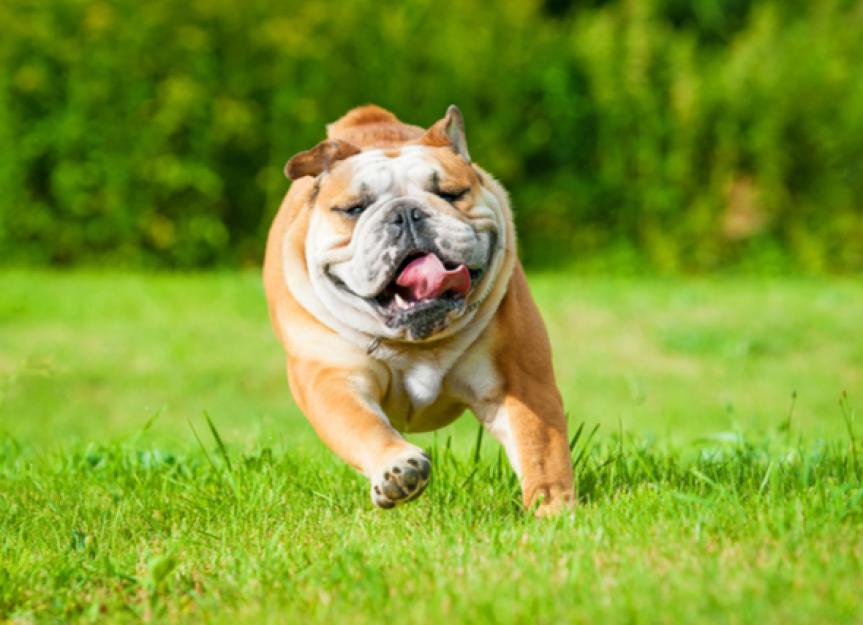How Do Dogs Sweat?
I recently ran a race on the Fourth of July. It was a grueling, 6.2-mile run in the heat and humidity of a typical summer day. Needless to say, I was drenched in sweat by the time the race was over. Dogs weren’t allowed in the race, but if they had been, they wouldn’t have been sweating like their human counterparts.
Why is that? Do dogs sweat? Answering the question of whether dogs sweat involves delving into the science of sweating.
Do Dogs Sweat?
We have millions of sweat glands all over our bodies. These glands, called eccrine and apocrine, are activated by nerves to help cool us off. Eccrine glands produce and release an odorless, clear fluid that evaporates and aids with heat loss. Apocrine glands, located in the armpits and genital area, secrete a thick fluid that releases an odor when it mixes with bacteria on the skin’s surface.
Dogs have a type of sweat gland called merocrine glands, which are located in dog paw pads. Rarely, a dog will sweat through its paws. Overall, though, dogs have far fewer sweat glands than people do, making their other natural mechanisms for cooling off more important than sweating.
Thermoregulation in Dogs
Dog sweat glands, in addition to being few in number, are also inefficient. Therefore, dogs rely on other mechanisms to keep their body temperatures under control—a process called thermoregulation.
The primary form of thermoregulation in dogs is panting. When a dog pants, heat rises up from his chest and escapes through the moisture of his tongue, mouth and throat. As he exhales during panting, the moist air evaporates and keeps him cool. So, even though your dog won’t have sweaty armpits when he’s hot, you’ll know he’s trying to cool off when he starts panting.
Another form of thermoregulation is vasodilation, which is an expanding of the blood vessels. Vasodilation allows warm blood to get closer to the skin surface. The closer this warm blood is to the body’s surface, primarily through vasodilation in the face and ears, the better a dog can cool down.
Heatstroke in Dogs
When panting and vasodilation aren’t enough to keep a dog cool, heatstroke can occur. Heatstroke in dogs has many causes, including exercise, being trapped in a hot car, and not having access to fresh, cool water on a hot day. Heatstroke can be fatal if left untreated, so it is important to recognize its symptoms and act quickly. Symptoms of heatstroke in dogs include:
Red gums
Rapid heart rate
Incoordination
Unconsciousness
Excessive panting
Thick and ropey saliva
Body is warm to the touch
If your dog is showing signs of heatstroke, call your veterinarian immediately and get your dog to the veterinary clinic as soon as possible for treatment and monitoring.
Keeping Your Dog Cool
Because dogs can’t sweat like humans do, it is important for dog owners to be proactive about keeping their dogs cool during the warmer months. Here a few strategies to keep your dog cool:
Never leave your dog unattended in the car
Keep your home at a comfortable temperature
Make sure your dog has access to shade during outdoor play
Exercise with your dog in the early morning or the end of the day
Provide your dog with unrestricted access to cool, fresh water
Give your dog frozen dog treats, such as doggy ice cream or frozen broth popsicles
In addition, you can also outfit your dog with dog cooling apparel, like theSuitical Dry Cooling Vest,的时候散步或户外玩耍。Cooling mats help dogs cool down quickly, particularly when a cold surface like tile is not readily available.
Understanding how dogs cool off and knowing what happens when they overheat can help you take good care of your dog when the temperatures rise outside. Make sure your dog can enjoy the dog days of summer as much as you do!
Featured Image: Grigorita Ko/Shutterstock.com
Help us make PetMD better
Was this article helpful?
